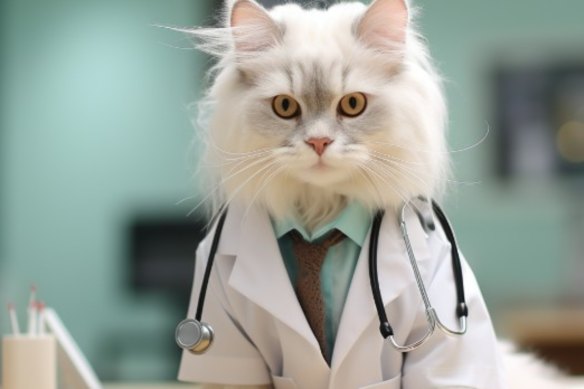- Sponsored
- Business
- Companies
- Bulls N' Bears
This was published 8 months ago
Optiscan teams up with Minnesota Uni to enter pet market.
Brought to you by BULLS N’ BEARS
By James Pearson
With 12 million pets diagnosed with cancer annually, Optiscan and the University of Minnesota Veterinary faculty have inked a deal that will see them study the pet cancer market with a view to commercialising Optiscan’s unique cancer detecting imaging tool in the veterinary industry.
The partners have cemented an earlier memorandum of understanding to formally ink a research deal with the University of Minnesota College of Veterinary Medicine to develop clinical data, initially focused on the diagnosis and treatment of cancer in cats and dogs.

Optiscan Imaging has teamed up with the University of Minesota in the United States in a research deal to advance cancer research in companion animals using its imaging technology.Credit: Suplied
The partnership formalises a comprehensive research agreement between both parties to use Optiscan’s digital “confocal laser endomicroscopic imaging system” in combination with the university’s renowned veterinary expertise and facilities.
Optiscan has developed imaging technology that is capable of determining if a tumour or lesion is cancerous without the need for a painful biopsy. It can be used both externally and internally.
‘It marks another significant milestone in our efforts to demonstrate that the medical benefits derived from Optiscan’s technology platform extend beyond the treatment of humans.’
Optiscan Imaging CEO and managing director Dr Camile Farah
By using an injectable contrast dye known as “fluorescein” in tandem with its imaging device, the Optiscan’s system can improve the real-time imaging of cancerous cells.
The initial data from the partnership will form the basis of background information used in clinical studies which will be needed for full US Food and Drug Administration (FDA) approval of the company’s technology in veterinary therapies.
Notably, there are more than 70 million domesticated dogs and 80 million cats in the US alone, many of them facing significant health issues.
Annually, more than 12 million pets are diagnosed with cancer, creating a pressing need for improved veterinary services. Among these, breast and oral cancers are particularly acute, accounting for 27 per cent to 53 per cent of cancer diagnoses in cats and dogs respectively.
Optiscan’s MedTech platform also offers exciting potential in the lucrative equine veterinary care market, with its real-time, non-invasive imaging technology able to improve not only surgical precision but also diagnostic accuracy.
Optiscan Imaging CEO and managing director Dr Camile Farah said: “It marks another significant milestone in our efforts to demonstrate that the medical benefits derived from Optiscan’s technology platform extend beyond the treatment of humans. By providing real-time, high-resolution imaging solutions, we aim to empower veterinarians to make quicker, more accurate diagnoses, particularly in critical areas like oncology.”
Optiscan says its move into the veterinary sector could also yield further opportunities such as reproductive assistance in cattle, sheep and pigs – an idea originally cited by Optiscan’s biggest shareholder, Bob Peters – a prominent West Australian businessman and horse racing identity.
After revealing its landmark “InVue” imaging device for microscopic precision surgery earlier in the year and a collaboration with the well-regarded Mayo Clinic to develop its technology for robotic surgery, Optiscan shares have settled around the 16.5c mark, up almost 70 per cent since June.
With the company now entering the addressable market for companion animals, one which could eventually even challenge the human market for size, it may just be on the cusp of delivering something particularly special for both people and their pets.
Is your ASX-listed company doing something interesting? Contact: mattbirney@bullsnbears.com.au